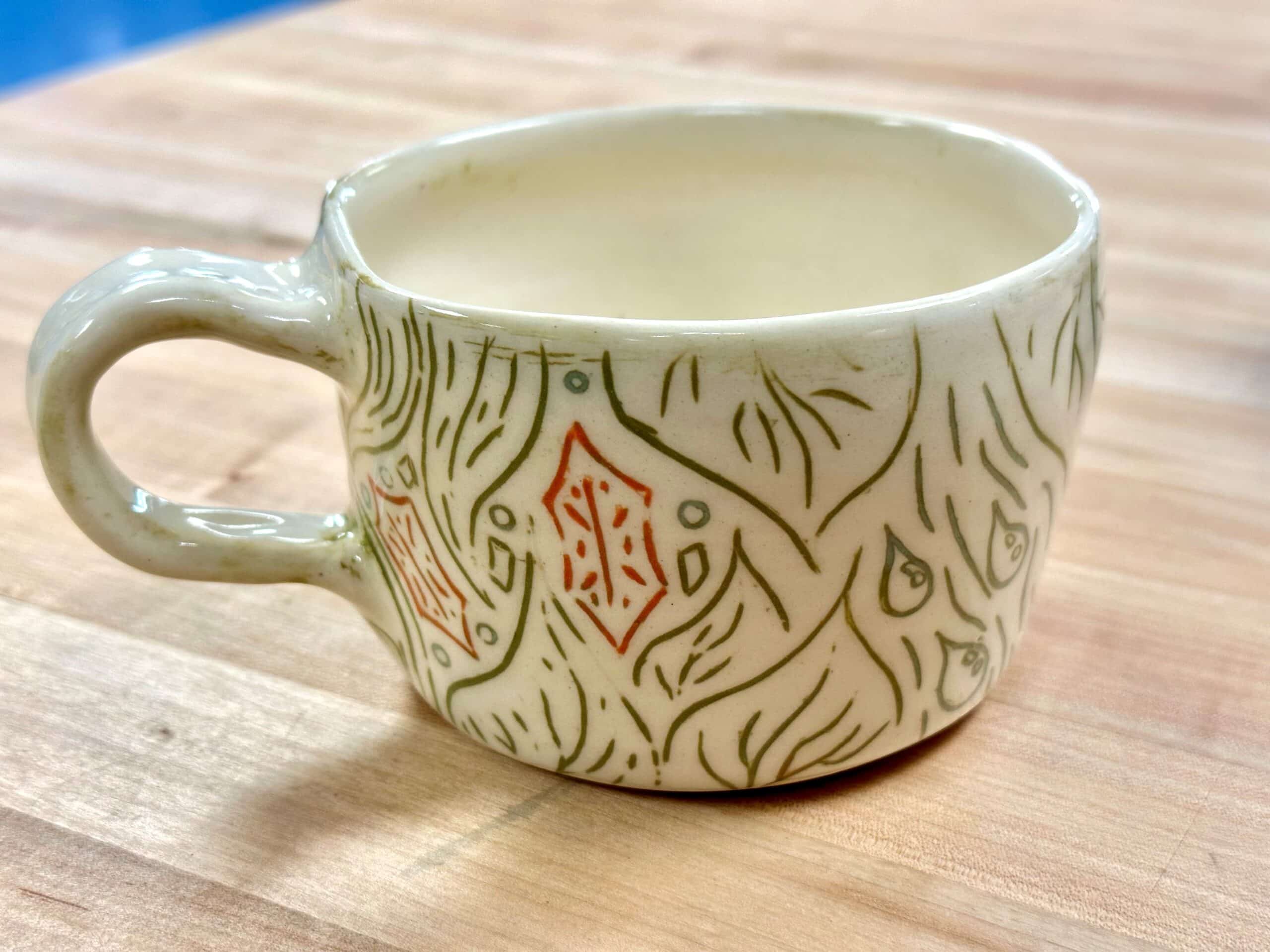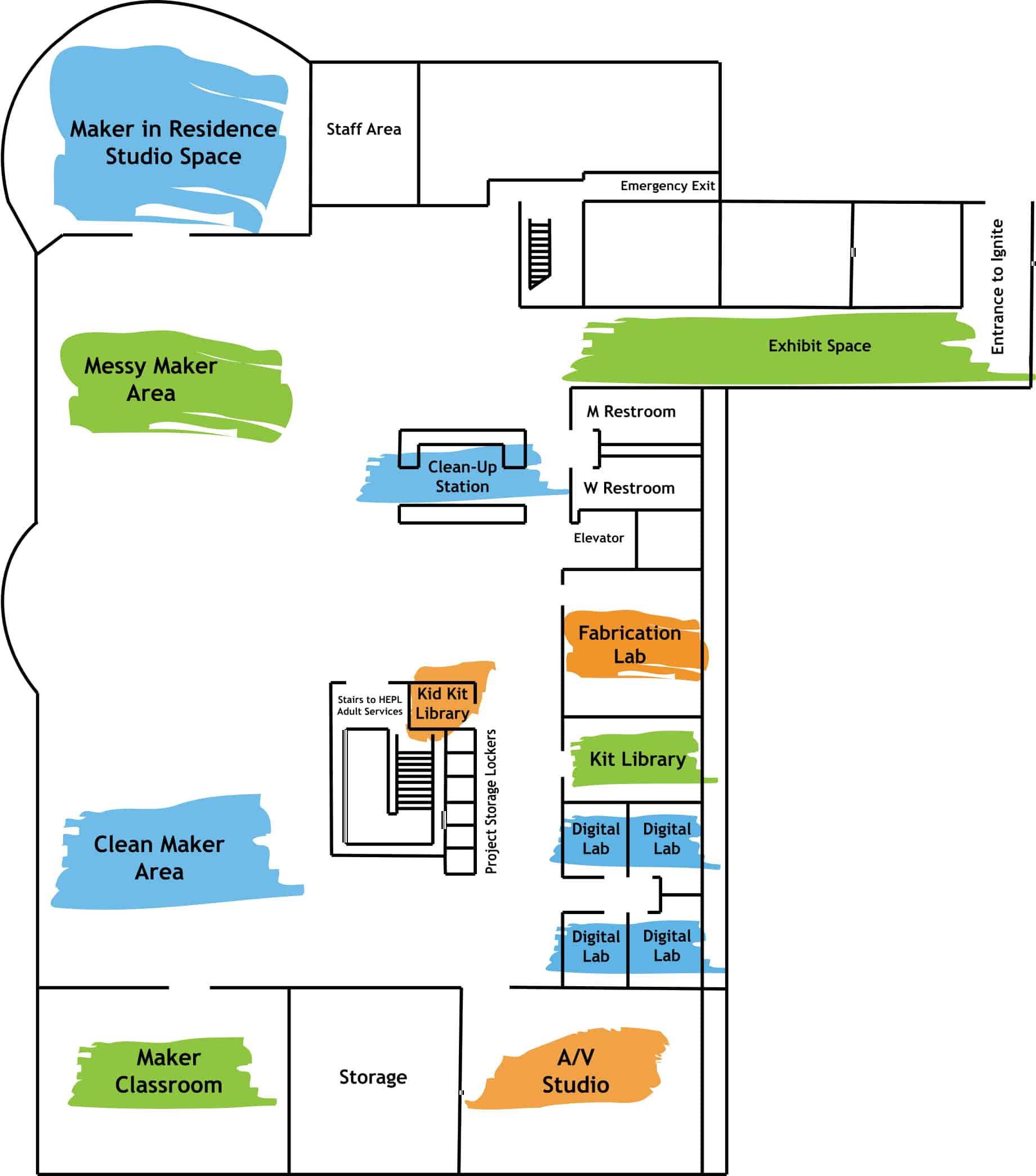by Jared Hart
Over the past few months, I have been taking classes at Yellow Door Ceramics Studio and it has given me many opportunities to try out several different decorative techniques. These are a few of the decorative techniques for ceramics I’ve tried out so far using equipment and materials available in Ignite Studio.
Glaze Resist with Vinyl
Using a Cricut in Ignite, I cut out some decals and applied it to my pottery to resist the underglaze when painting.

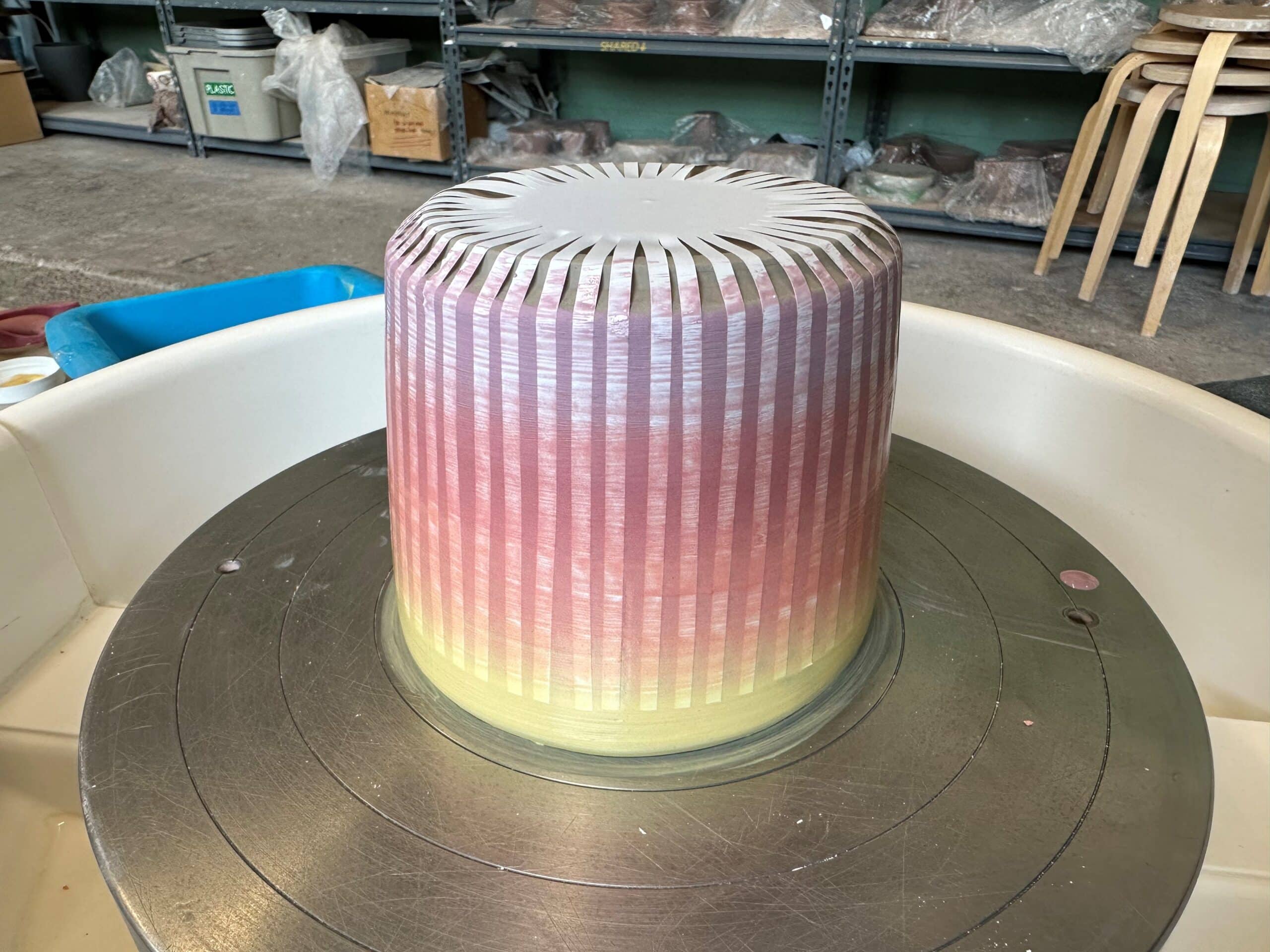
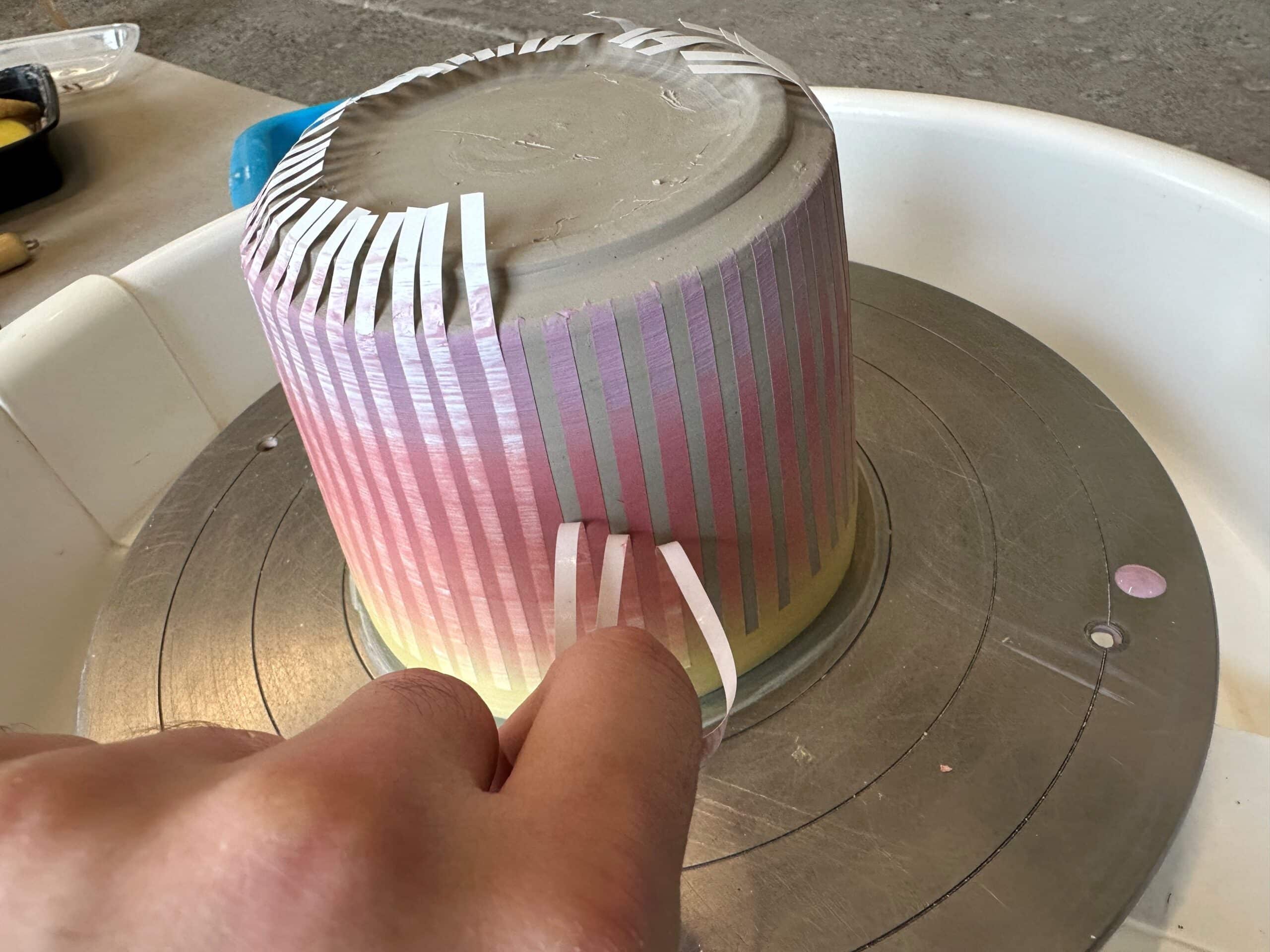
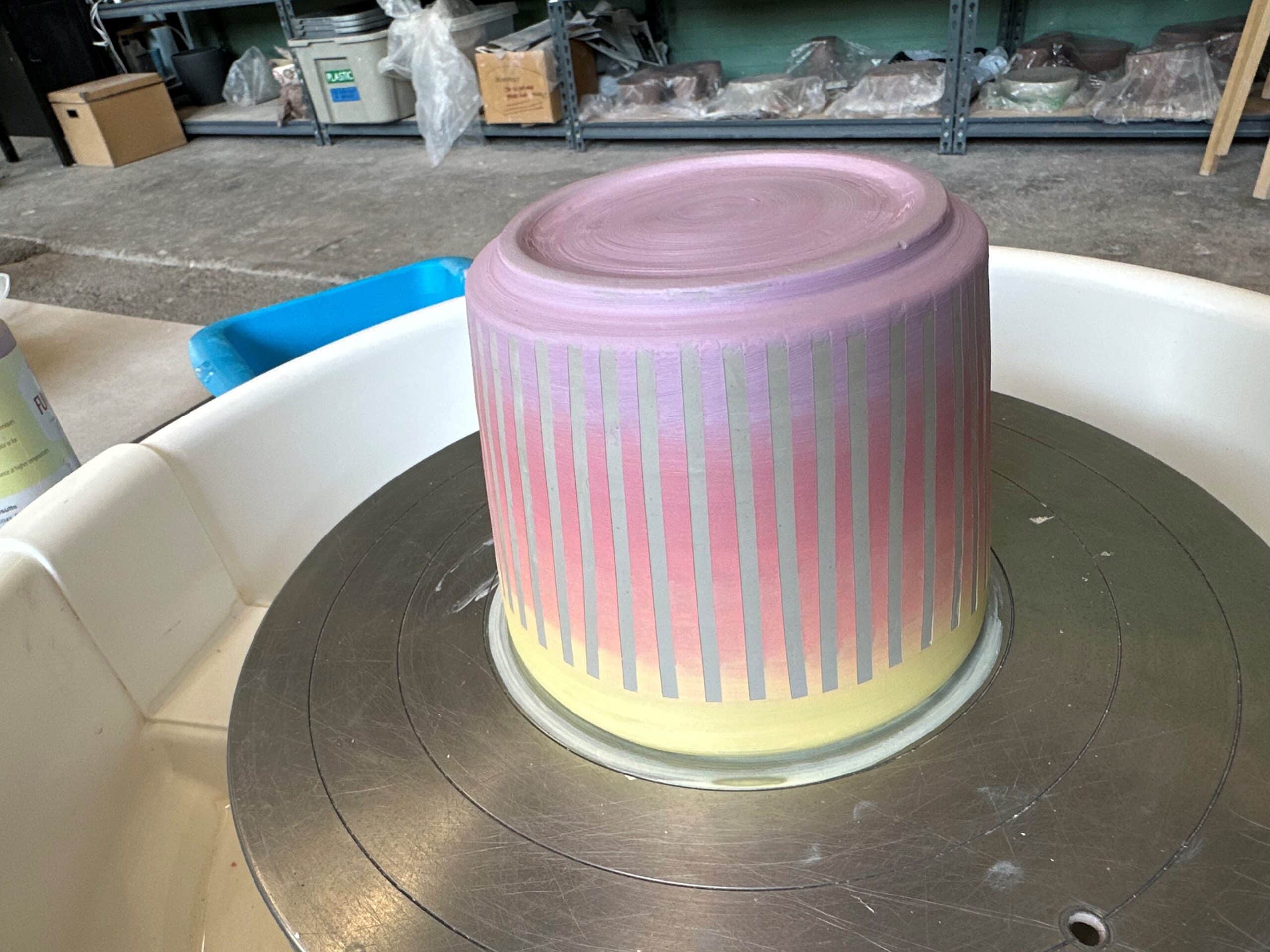
One thing I learned about this method is that vinyl tends to stick to bisqueware (first firing) a bit better than it does greenware (not fired). In the end, it still worked. It just took a lot of patience to get everything placed where I wanted it.
Alternatively, paper can be cut on the Cricut instead of vinyl. Paper can be soaked in water and applied to the leather hard clay. The wet paper will cling to the clay body really well.
Once the pot had been bisque fired, I coated it in a clear glaze to brighten the colors and give it a glossy finish.

3D Printed Stamp
Using Adobe Photoshop in Ignite’s Digital Media Labs, I created a 3D file from my illustration of a triceratops skull. While doing this, I, unfortunately, discovered that Adobe is in the process of removing Photoshop’s 3D features. Alternatively, this can probably be done in any 3D modeling software such as Blender or Fusion360. You may also be able to get everything you need from this cookie cutter web app: CookieCad. I printed my design using Ignite’s 3D Printers.
I then rolled out some fresh clay into a thin slab and pressed my stamp into the clay. After the stamped slabs had dried to a leather hard state, I used a clay knife to carve out the unwanted sections.
I then attached the clay to the cup by roughening up the surfaces to be joined, adding water, and pressing them together firmly. This project was also an experiment with attaching two different types of clay. The risk in this process is that these two clays shrink at slightly different rates throughout the firings. Because of this, there is a chance that the attached piece could crack or completely detach in the kiln.
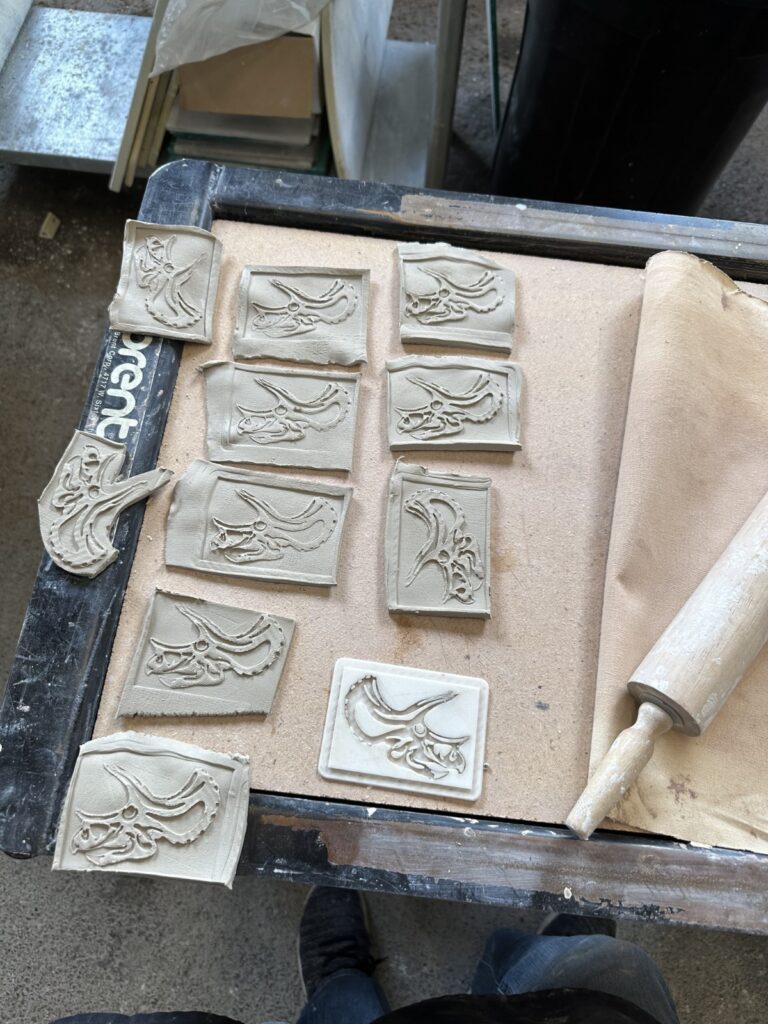
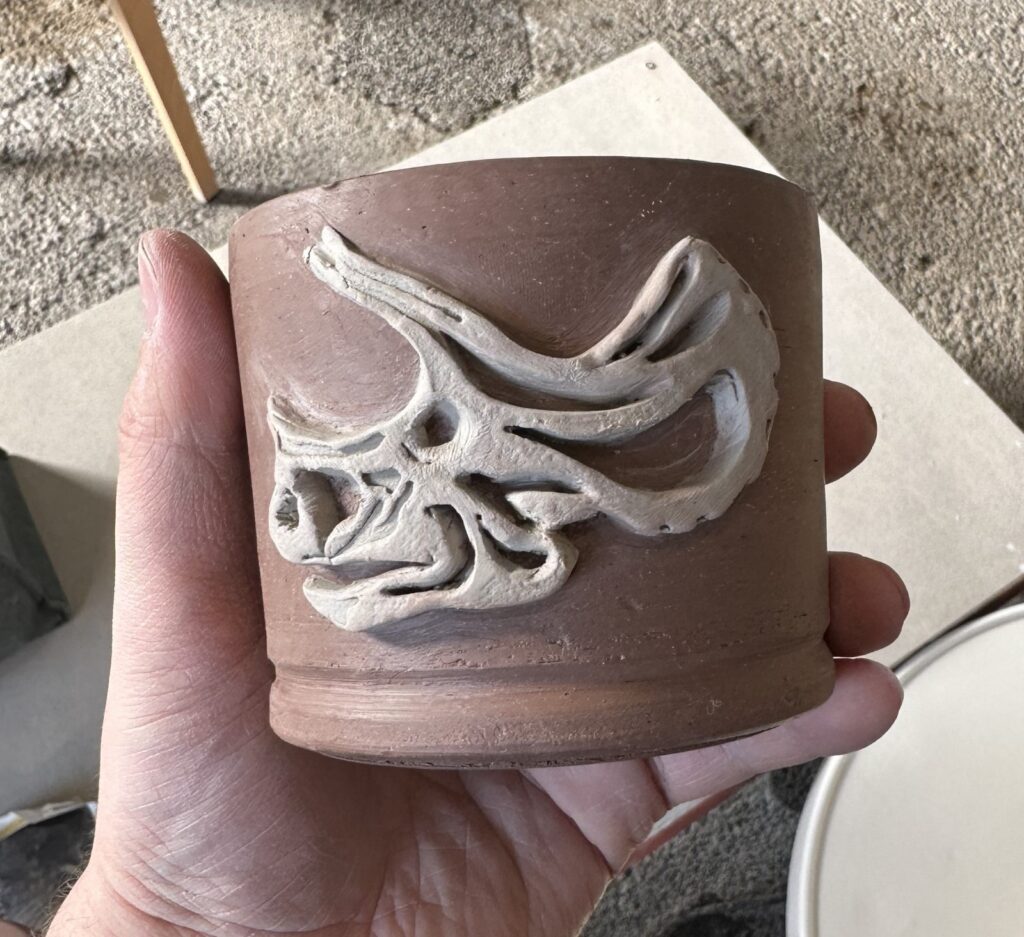
After the bisque firing, everything still looked good. I coated it in a clear glaze and had to cross my fingers again as I waited for it to be glaze fired.
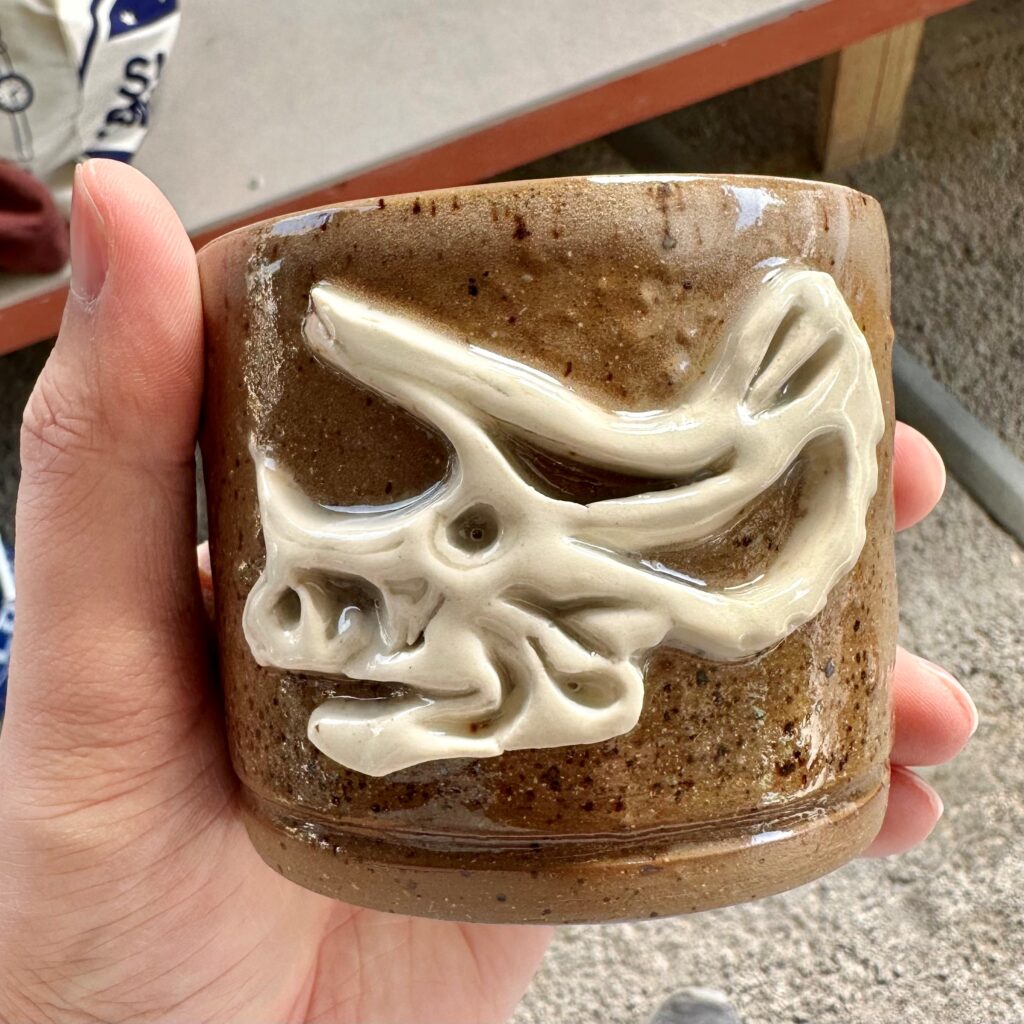
Water Etching
Vinyl or tape can also be used as a resist to create texture. This process works best on leather hard clay. In the photos below, I was working with a piece that was nearly bone dry. It still works, but it requires a lot more time and patience. After laying out the design on your piece, use a small bucket of water and a sponge. Moisten the sponge and slowly and gently wipe across the pottery. Rinse out the sponge every couple passes.
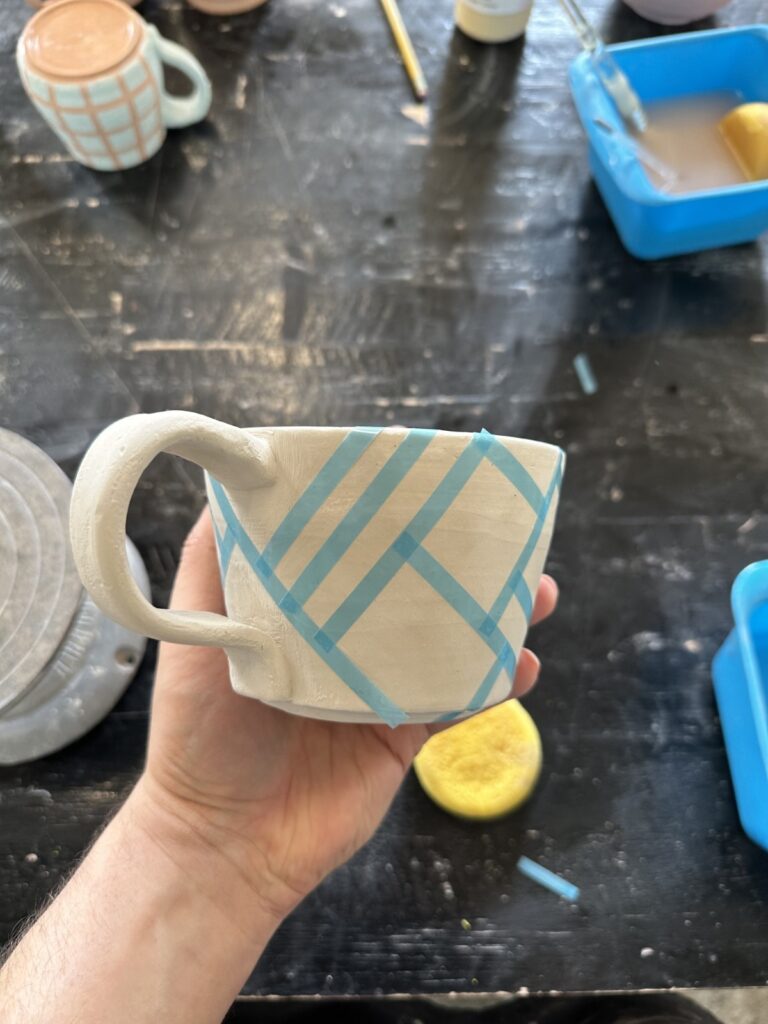
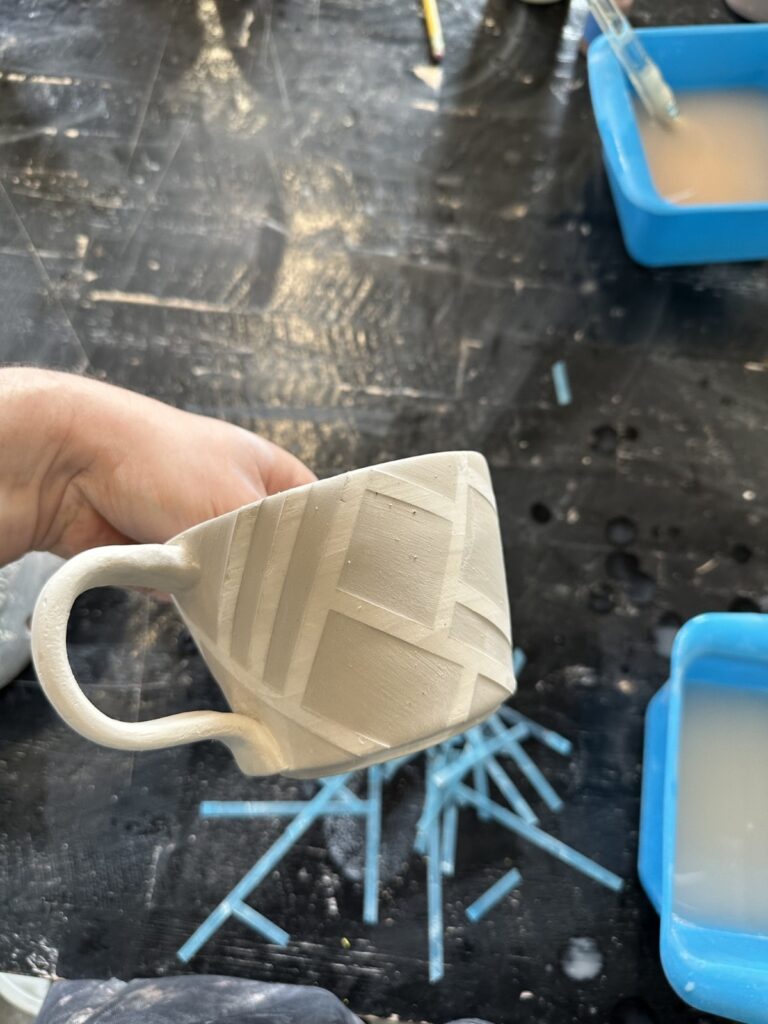
This process will soften and take away some of the exposed clay while the protected areas stay dry and unaffected. This is a one simple way to add some design to piece if it dried out before you had a chance to decorate it.

Sgraffito
Sgraffito is a form of decoration made by scratching through a colored surface of clay to reveal a lower layer of clay. This can be done with any tool that can scrape or cut through the clay. In the example below, I used a diamond core sgraffito tool to carve away some of the green areas to reveal the raw clay.
SAFETY WARNING: When carving clay, it is important to do it while there is still moisture in the clay. Carving bone-dry clay or bisqueware will create a dust that contains silica which can scar your lung tissue and cause irreversible loss of breathing capacity.


Mishima
Mishima is a process similar to sgraffito. Instead of carving away a colored area, the raw clay is carved. Color is then added into the etched lines. The surface is then scraped to remove any color that is not in the recessed lines.

One thing I love about ceramics is that there are so many methods of decorating. I hope this inspires you to try new techniques or take a one-night class somewhere and see if you fall in love with it like I did! Happy making!

